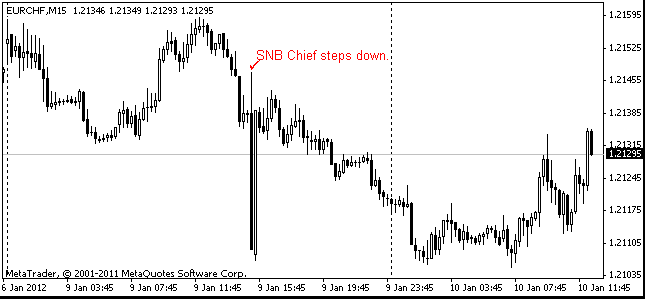EUR/usd
The single currency and many other markets experienced a downward correction yesterday. The fact that traders ignored bad news from the euro zone proves that it was just a correction, not the beginning of selling (at least in the euro).The decline started later and was quite moderate. The profit-squeeze drove the pair from 1.34 to 1.3340. This is where trading was closed last week. And this is where the euro came to be this morning after another attempt to break through 1.34. Thus, trading is held in a very narrow channel, so far there haven't been any serious causes for growing or falling. This day promises to be more interesting since the USA will publish its statistics on retail sales, which are expected to demonstrate further growth. A bit earlier the euro zone will release its trade balance for November. Here the market expects to see the surplus increase to 8.2bln, but don't be too optimistic. The euro zone demonstrated a good surplus growth at the beginning of the second half-year, but in the recent months the situation has been getting worse. In particular, the already published stats on Germany's foreign trade in October-November proved to be much worse than the figures for June-September. We've mentioned it many times that Europe has every chance to get the economy's rebalancing by means of exports, unlike the USA and Britain. However, for that the euro zone needs its domestic currency to be weak. Unfortunately, the euro gets weak only at the time when investors are worried about the integrity of the region and get rid of their savings in the euro. It's really hard to weaken the euro by means of changes in the monetary policy when the interest rates are mainly zero. As a result, we get the continuing decline in production in the region. Yesterday's data showed a 0.3% decline instead of the expected growth by 0.2%. Annually the decline extended to 3.7%. The worst situation in respect of this indicator is observed in Italy, which suffers an annual decline of 7.6%. The same rate was reported in December 2011. The country with the government debt of over €2trln can hardly deal with this catastrophe.

GBP/USD
It's a big day for the British pound. It's time of CPI and PPI releases. It's expected that the CPI will grow by 0.5%, which will make it possible for the annual price growth rate to remain at 2.7%. It's remarkable that the producer prices are at a much lower level and have grown just by 0.3% against the previous year. This means that retailers may freely cut their prices to stimulate the demand. Moreover, it's widely rumoured that Premier Cameron may loosen Britain's ties with Mainland Europe even more. However, it is likely to be nothing but an idle threat.

USD/JPY
The structural selling in the yen, provoked by Japanese politicians, can be stopped only by other Japanese politicians. Thus, last night Minister for Economic Revival, Akira Amari, said that it could be harmful for the country if the yen got too weak. It's really surprising that this aspect got in the limelight so late, as, being in constant need for refinancing, Japan is very dependent on the capital market. The yen's antirally and the desire to raise the country's inflation rate have already pushed the 10yr bond yields up to 0.82% in comparison with the last year's low of 0.73%. Amari's words triggered off even a more nervous profit-taking than at the beginning of the previous week. usdjpy is now trading at 88.80 against 89.60 at the beginning of the day.

EUR/CHF
Against the background of the waning interest in the Japanese yen, the franc, on the contrary, comes into focus. Yesterday EURCHF shot up above 1.23 for no serious reason and last night it got as high as 1.2380. However, afterwards the pair was also caught by profit-taking. The heavy selling of the dollar last week and of the yen and franc this week gave way to a short-term profit-squeeze.
